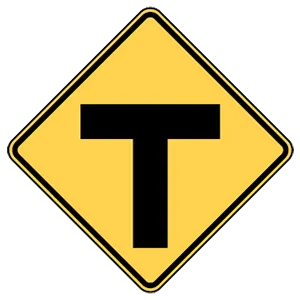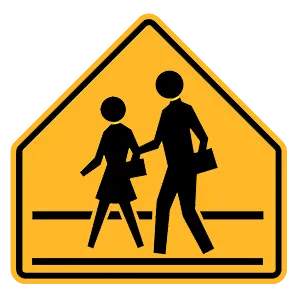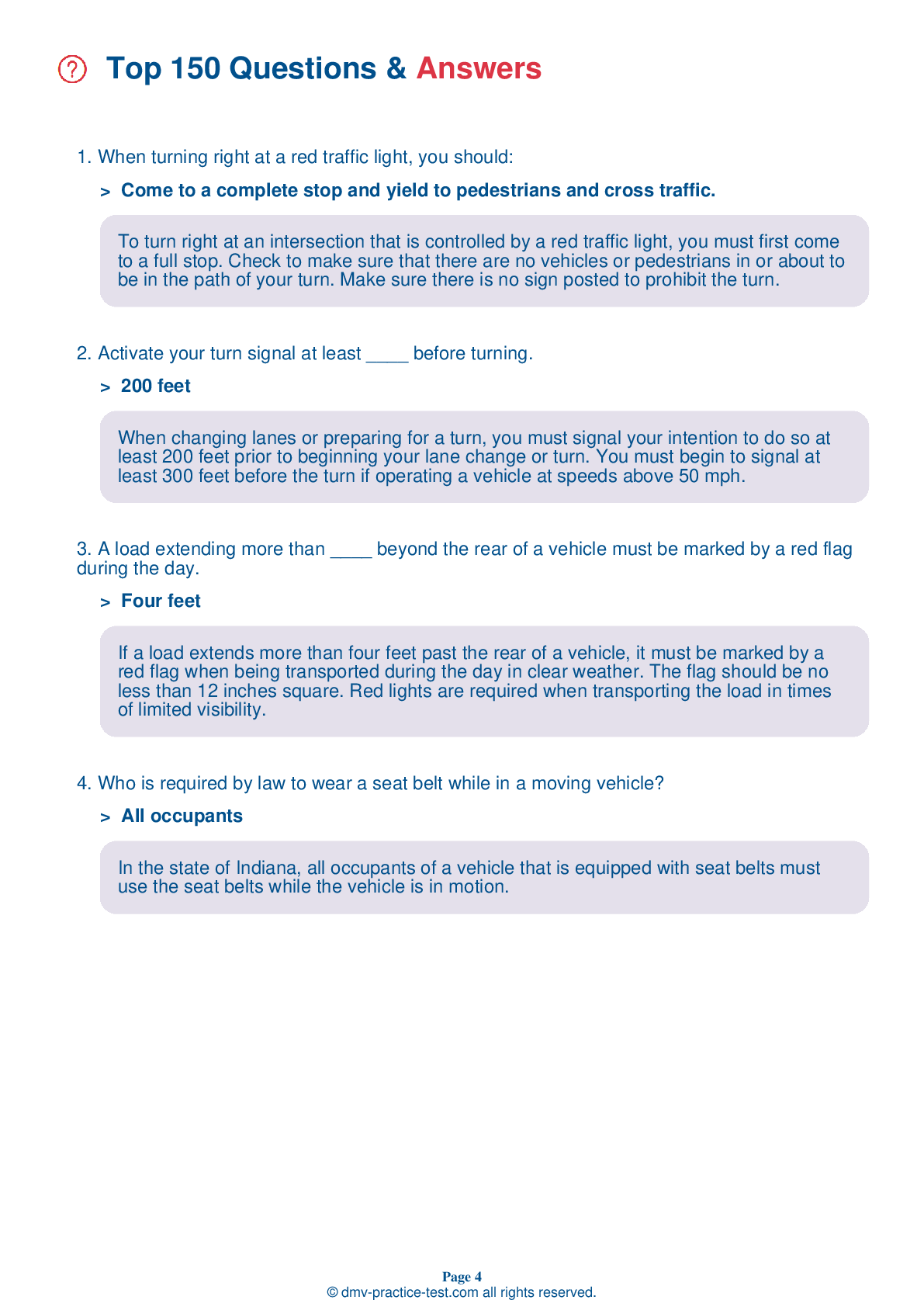FREE Indiana DMV Practice Test #18 Page 4 of 5
This set of Indiana DMV practise tests has been updated for January 2025. It includes questions based on the Indiana Driver Handbook's most significant traffic signals and laws for 2025. Use actual questions that are very similar (often identical!) to the DMV driving permit test and driver's licence exam to study for the DMV driving permit test and driver's licence exam.
On the practise exam, each question gets a tip and explanation to help you remember the concepts. The written component of the official Indiana DMV test will include questions about traffic rules, traffic signs, and driving statutes, as well as information from the Driver Handbook.
To obtain a passing grade, you must correctly answer 44 of the 50 questions. Take our DMV practise exam to help you prepare for your Indiana instruction permit or driver's licence.
The DMV exam is available in several languages.
Using any kind of testing assistance will result in an automatic fail, and the DMV may take additional action against your driver's licence, so stay away from it.
28 . This sign shows one type of:

This sign indicates that a T intersection is ahead.
29 . You are driving on a highway divided by two solid yellow lines. You may:
Double solid yellow lines are used to mark roadways where passing is prohibited from both directions. You may cross these lines only to make a left turn into or from an alley, private road, or driveway.
30 . If you want to get off the freeway but you have missed your exit, you should:
If you miss your exit, you should take the next exit. Do not stop or back up on the highway, swerve across multiple lanes to try to make the exit at the last second, or cross over the median to turn around. All of these maneuvers are illegal and extremely dangerous.
31 . This sign means:

This sign indicates that a school crossing is ahead.
32 . While driving, you come upon a sign displaying the words “Reduced speed, 35 mph." This means:
"Reduced speed" signs inform drivers that they must reduce their speeds. If a new speed limit is posted on one of these signs, the new speed limit begins at the sign.
33 . Which of the following does not happen after drinking?
Alcohol reduces your reaction time, reduces your ability to see clearly, changes your judgment of speed and distances, reduces your ability to recover from the glare of headlights, and often reduces your inhibitions and makes you more likely to take risks.
34 . The sign with this shape and color is a ____ sign.

Pennant-shaped warning signs like this are only used to indicate a no passing zone.
35 . When you hear a fire engine siren behind you, you must:
When you hear the siren of an emergency vehicle, you must pull over to the curb or side of the road and stop.
36 . To enter a freeway:
When merging into traffic, you should signal and enter at the same speed that traffic is moving. Always yield to other traffic when entering a roadway.
37 . This sign means:




